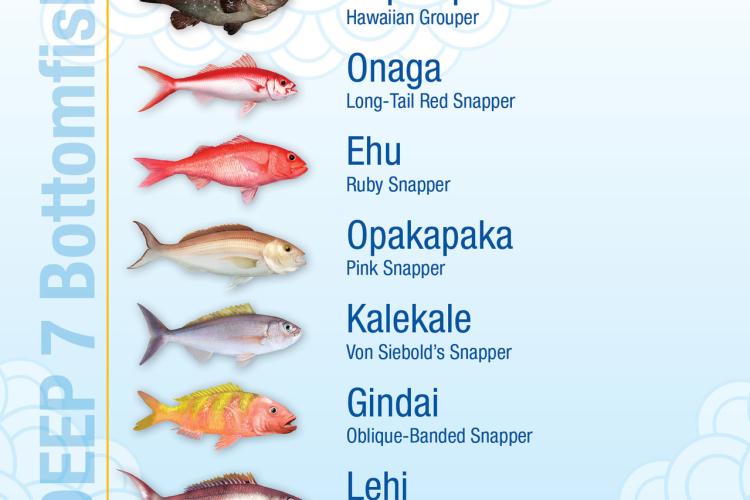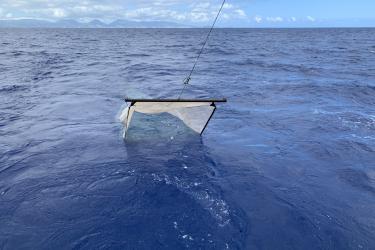The “Deep 7” are seven fish species that live near the seafloor in deep water off the coast of Hawai‘i: onaga, ‘ōpakapaka, ehu, kalekale, gindai, lehi and hapu‘upu‘u. These bottomfish are incredibly valuable both economically and culturally in Hawai‘i. We want to do our part to make sure these fish are never over-fished, but survive and thrive as a sustainable Hawaiian fishery into the future.
At the Pacific Islands Fisheries Science Center, we are trying to discover how many bottomfish live around the main Hawaiian Islands. In September 2016, we launched an independent survey to count and measure bottomfish by working with local fishermen and using new underwater camera technology. Knowing more about these mysterious deep dwellers, we can continue to improve the science used for management and help support sustainable fishing practices.
The primary goal of the #BFISH survey (Bottomfish Fishery-Independent Survey in Hawai‘i) is to get a snapshot of the numbers and sizes of each species of bottomfish around the main Hawaiian Islands. First, we are working with local fishers through the Pacific Islands Fisheries Group (PIFG) to collect data at various, scientifically-selected sites around all eight of the main (inhabited) Hawaiian Islands. This method of research fishing is standardized across vessels—each fisherman uses the same set up of hooks, line, and bait. Fishermen record the species, number, and size of each fish they catch. They also take pictures of their survey efforts and send the fish back to us at the science center, where we will use tissue samples to determine the age and maturity of each fish.

Onaga, longtail red snapper (Etelis coruscans).
The second phase of the #BFISH survey began today aboard the NOAA Ship Oscar Elton Sette. Researchers will deploy a new underwater camera system called MOUSS (Modular Optical Underwater Survey System) to collect video footage of bottomfish in their natural habitat. MOUSS is a stereo-video camera system that can record images of bottomfish without artificial lights. From this video footage, we will be able to observe, identify, count, and measure each fish—even if they aren’t biting.
NOAA Fisheries is committed to cooperative research to build relationships with the community and improve the collection of scientific information. Data collected on this research survey will guide sustainable fisheries and resource management for the Deep-7 species and the overall ecosystem. We are pleased to have the continued partnership of the local fishing community in this exciting new endeavor. Follow our research mission #BFISH on Twitter at @NOAAFish_PIFSC.



